There are many customers with strong hands-on ability, who are curious about how the LED module assembly? Want to learn and assemble it by myself. Then we will start from the classification of the box, to the selection of materials, and the process of the production process. And many other aspects to explain the production process of the box.
NO.1 LED display box introduction:
The general LED box is divided into two types: one is a waterproof LED box, and the other is a simple LED box.
The waterproof box is generally used for the installation of outdoor display screens. It has the functions of waterproof, dustproof and windproof. These protection functions have a certain international standard IP. Now the general protection level is IP65, IP68 >> LED display waterproof and dustproof the standard
Simple box is generally used for indoor or semi-outdoor LED display installation, it is not equipped with waterproof function.

Simple box
Many people can’t tell the difference between a simple box and a waterproof box. Here is the simplest method. We can see from the above two pictures that the simple box does not have a back cover, while the waterproof box has a Has a back cover.
No.2 sheet metal material selection:
The commonly used materials for sheet metal processing include stainless steel (mirror surface, brushed surface, matte surface), galvanized sheet (SECC, SGCC), copper (CU) brass, red copper, beryllium copper, aluminum profiles, aluminum plates (6061, 6063, Hard aluminum, etc.), hot-rolled sheet (SHCC), cold-rolled sheet (SPCC), according to the different functions of the product, the selection of materials is different, and it is generally necessary to consider the use and cost of the product.
- Stainless steel; it is mainly used without any surface treatment, and the cost is high.
- Galvanized sheet SECC, SGCC. SECC electrolytic plate is divided into N material and P material. N material is mainly used for surface treatment, which is expensive, and P material is used for sprayed parts.
- Copper; mainly used for conductive materials, its surface treatment is nickel-plated, chrome-plated, or no treatment, and the cost is high.
- Aluminum profiles; materials with complex cross-sectional structures are widely used in various boxes. The surface treatment is the same as the aluminum plate.
- Aluminum plate; generally use surface chromate (J11-A), oxidation (conductive oxidation, chemical oxidation), high cost, silver plating, nickel plating.
- Hot-rolled sheet SHCC, material T≥3.0mm, also uses electroplating and paint parts, low cost, but difficult to form, mainly flat parts.
- Cold-rolled sheet SPCC, mainly used for electroplating and paint, low cost, easy to form, material thickness ≤ 3.2mm.
No.3 production process
Now the general LED display box is made by a sheet metal factory. The three most important steps in sheet metal processing are folding, punching/cutting, and shearing.
1.1 In the bending process of the sheet metal factory, the main considerations are tool selection, bending sequence, bending compensation, bending interference, etc. Bending programming software is usually sold randomly, but most CNC bending machines in China are still programmed manually, and often rely too much on the experience of the master.
On the other hand, the domestic manufacturing process requirements are still certain compared to foreign countries. Therefore, the efficiency has not been improved, and the performance of the CNC bending machine has not been maximized.
Note: There are also some factories without this processing step, typesetting directly on the standard sheet, and then directly punching/cutting.
1.2 Then the material will be sent to CNC punch/cutting machine for punching/cutting process. In this process, it is necessary to compile NC (Numerical Control) codes for the parts to be processed. Most machine tool manufacturers now provide automatic programming software, which greatly facilitates programming engineers.
Factors to be considered by stamping/cutting programming engineers are sheet utilization, tooling, efficiency, accuracy, and more. After punching/cutting is complete, the part is de-microconnected and sent to a press brake for bending.
1.3 The first step is the blanking (also called blanking) process. Usually, the on-site workers will cut the parts and materials of the appropriate size from the large plates through the shearing machine according to the unfolded drawings provided by the technical department. In the case of a punch, the dead zone of the clamp must be considered. After the material is cut, the worker will mark the material number with a marker on the surface of each material.
1.4 Finally, according to the product conditions, welding, grinding, painting, assembly, packaging and other processes may be carried out, which will not be described here.
Based on the above, the cabinet is also very important when purchasing an LED display, especially in situations where the LED display is used in harsh environments.
NO.4 LED displa module assembly process
First, we need to load the waterproof mask on the LED module on the back
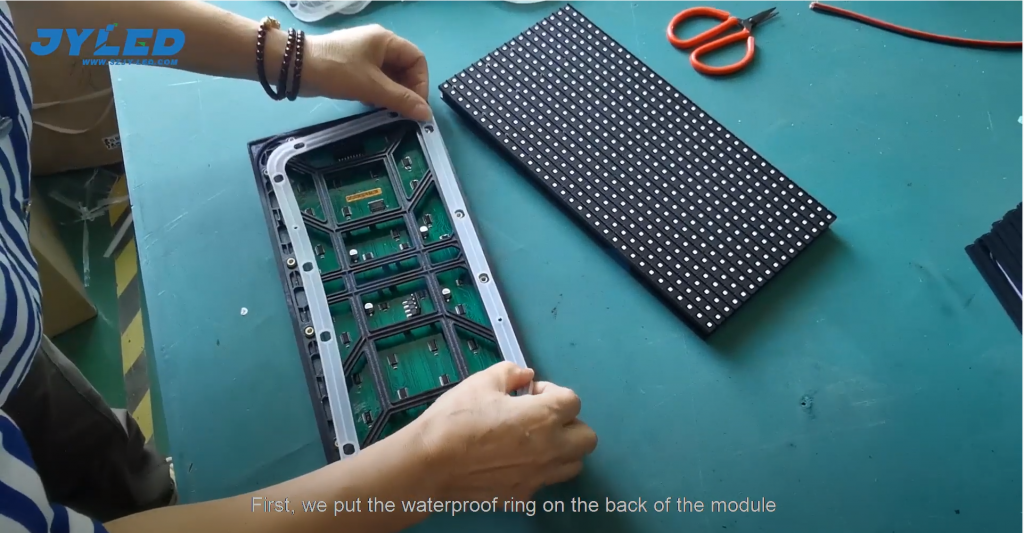
Then insert the data cable into the receiving card
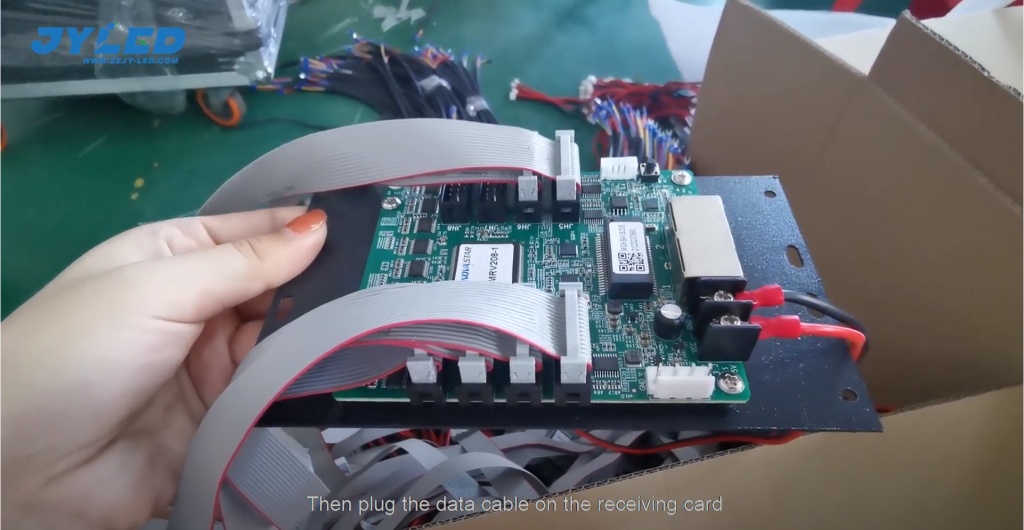
Then we need to install the power cord on the LED power supply. It should be noted that the black power cord is generally connected to the negative pole (V-), the red line is connected to the positive pole (V+), and the power cord cannot be reversed, otherwise the LED display will not work properly. display, and even short-circuit and burn the circuit board.
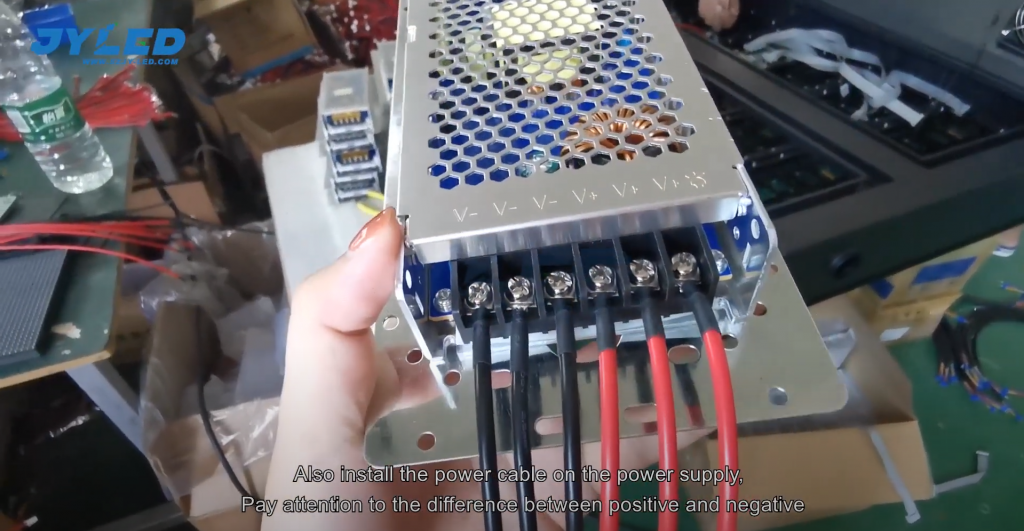
Preliminary work is done, now start assembling.
Place the LED modules close to each other and in parallel, try not to leave any gaps.
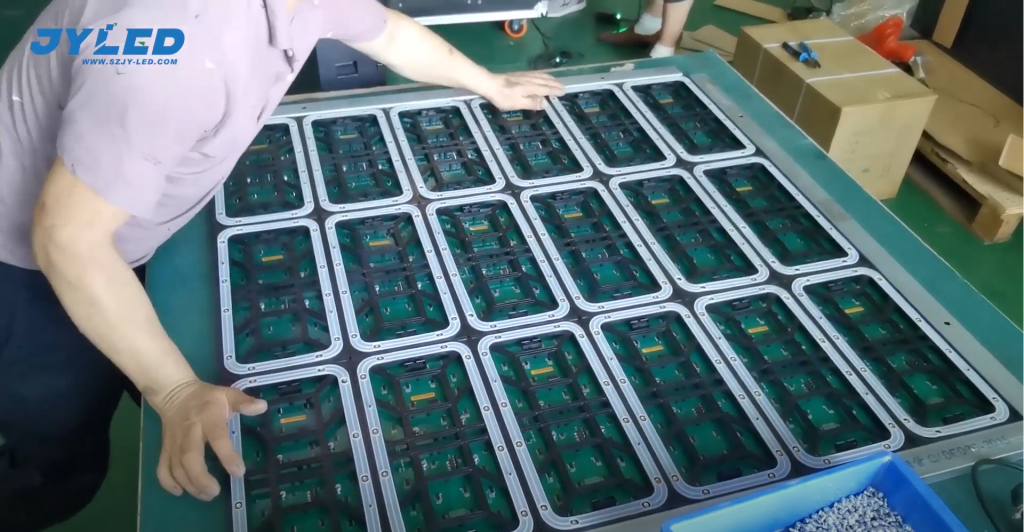
Now align the holes of the iron box with the LED modules placed below,Press firmly
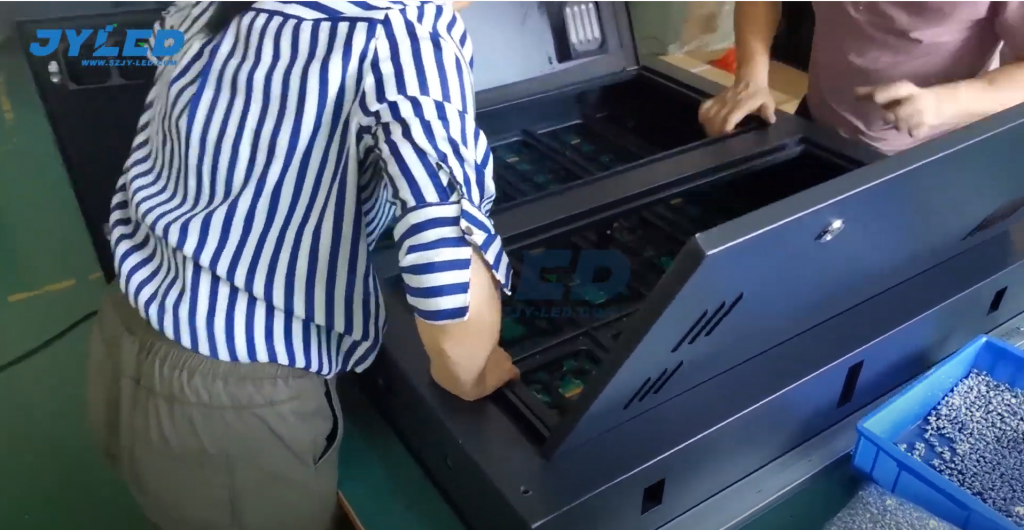
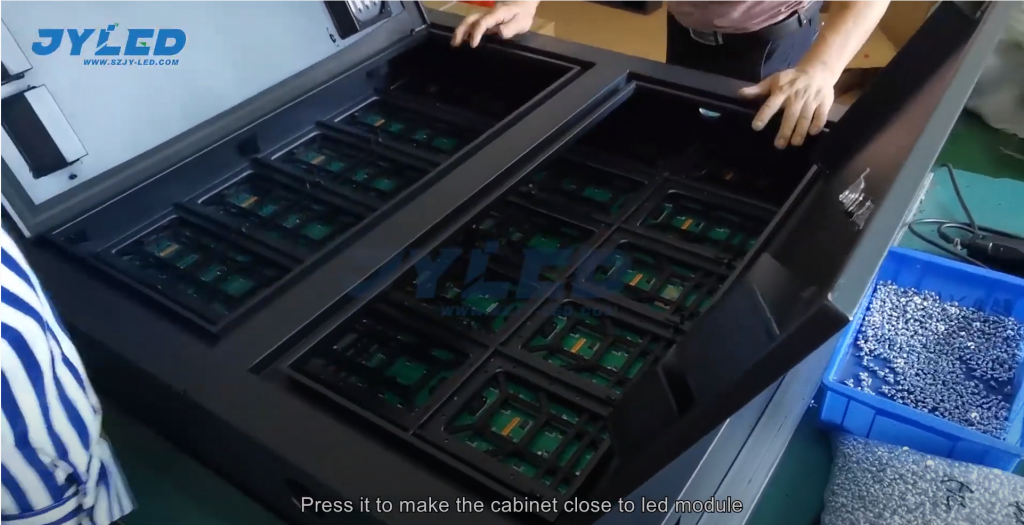
Screw the holes on the box
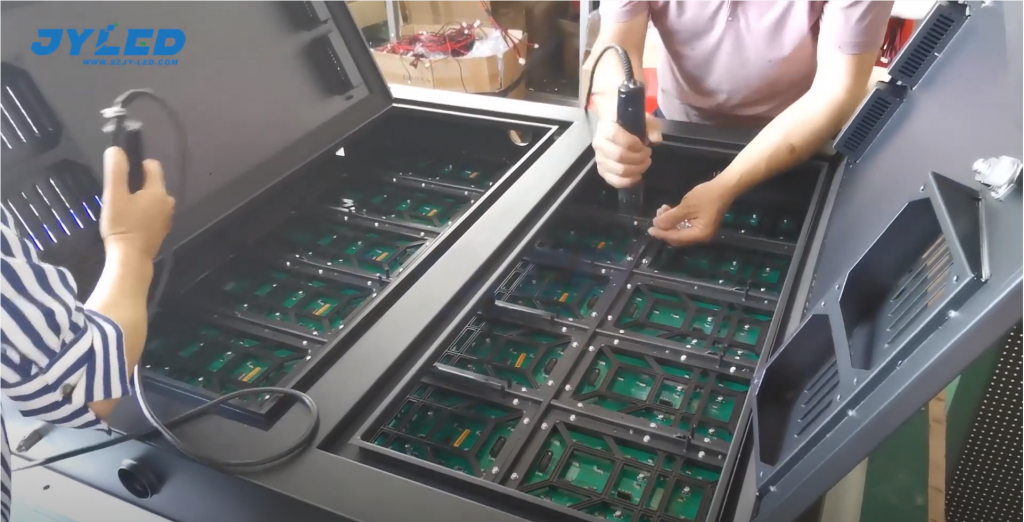
Install the short cable connecting the module and the module. This cable is used to transmit playback data. Each module is independent of each other. The reason why the content can be displayed synchronously is because these cables are transmitting data. Then the control card controls the ic on the module to assign tasks.
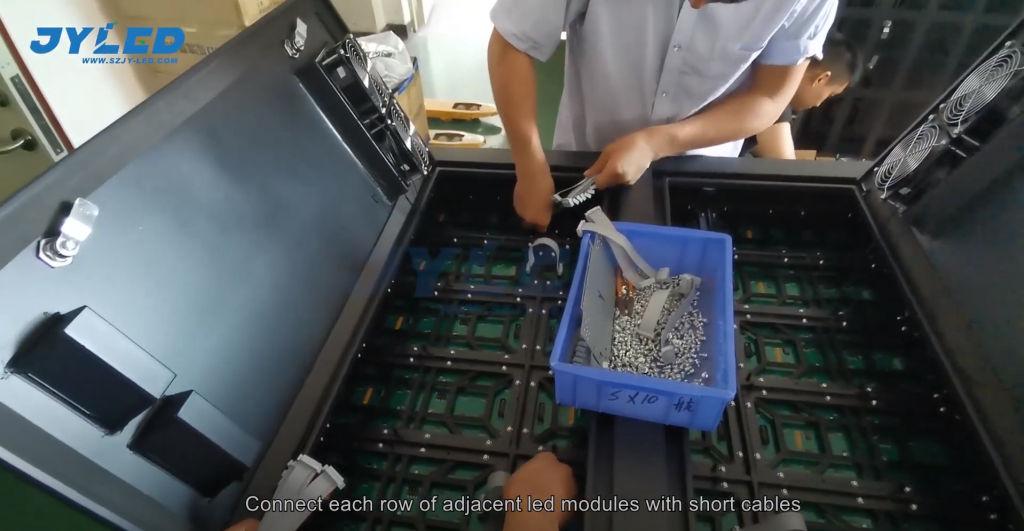
After the short cable on the box is plugged in, start installing the power supply. Special power supplies such as LED displays can carry many modules. Modules close to the power supply accessories need to be connected to the power supply at one end and the other end. Other modules, and other modules do not need to be wired directly to the power supply.
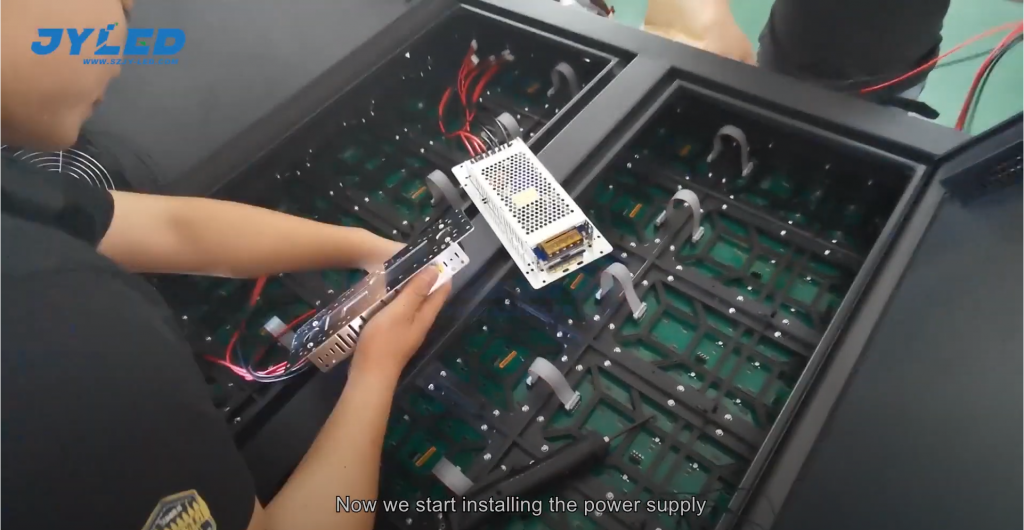
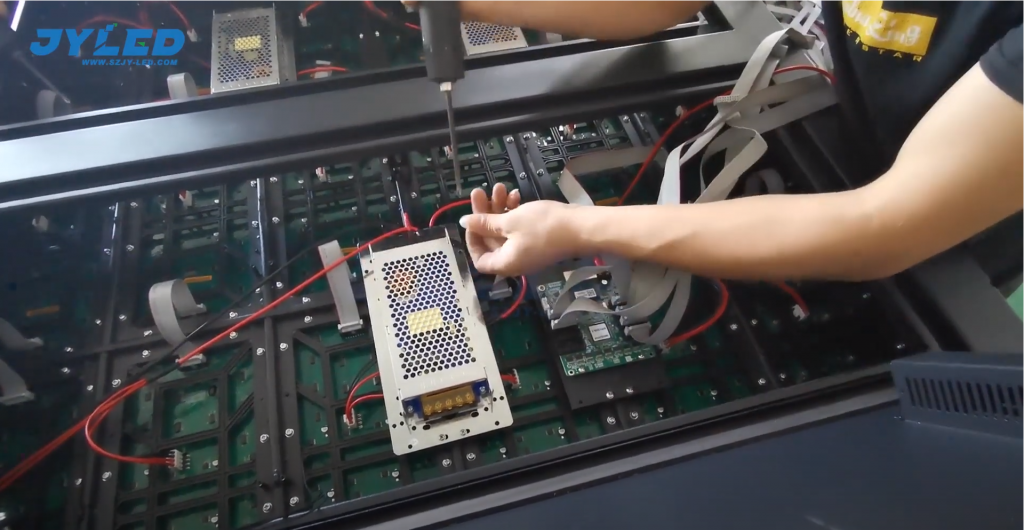
Tip: The number of modules carried by different voltage power supplies is different. Generally, a 5V-40A-200W LED power supply can carry 6-10 (quarter-scan) LED modules. Exceeding this number will easily lead to LED display. The overall voltage of the screen is different, which will make the final displayed picture appear inconsistent in brightness, thus affecting the viewing effect.
The first LED module should be connected to the receiving card using a long cable, the first signal port of the port card corresponds to the port of the first led module, and so on
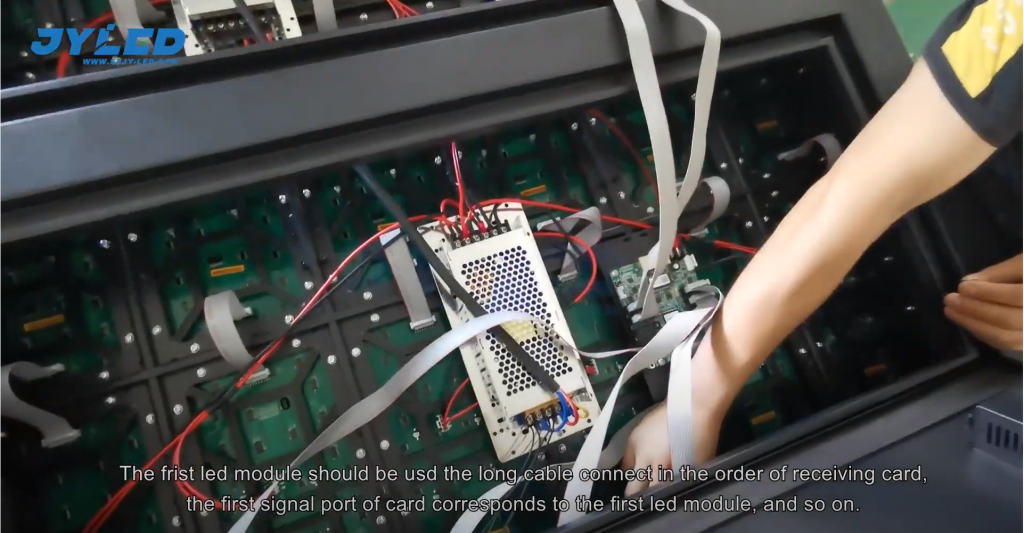
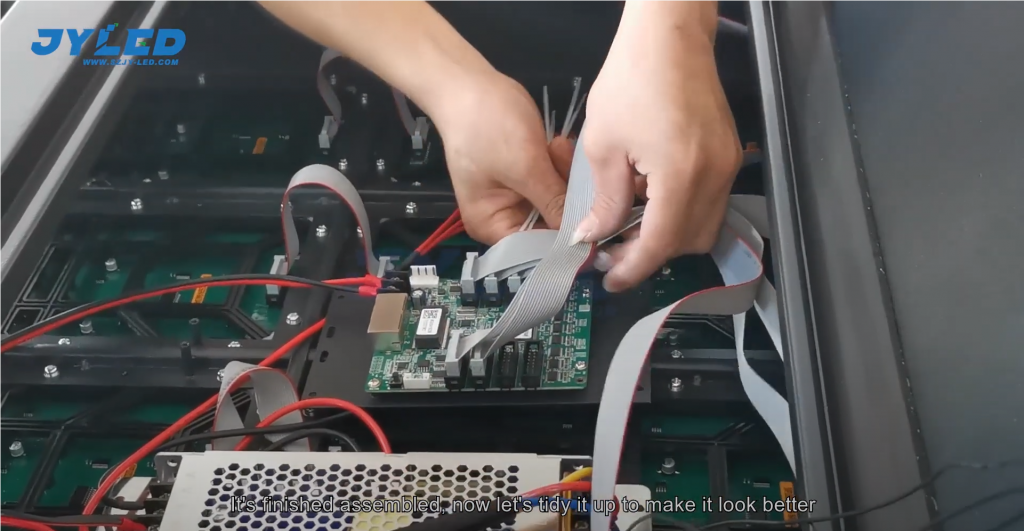
After completing the above process, you need to use cable ties to bind various data lines, which looks more beautiful.
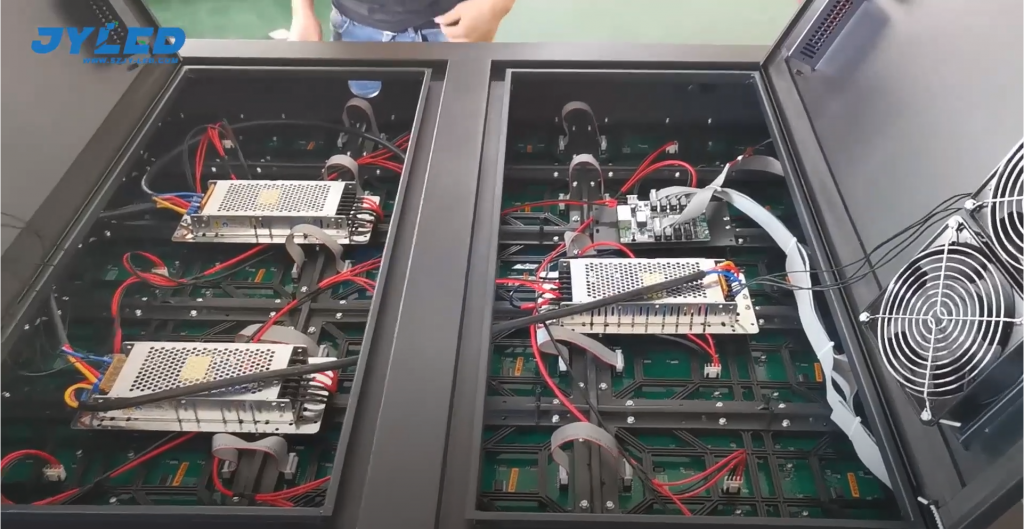
After closing the lid, an LED display is assembled
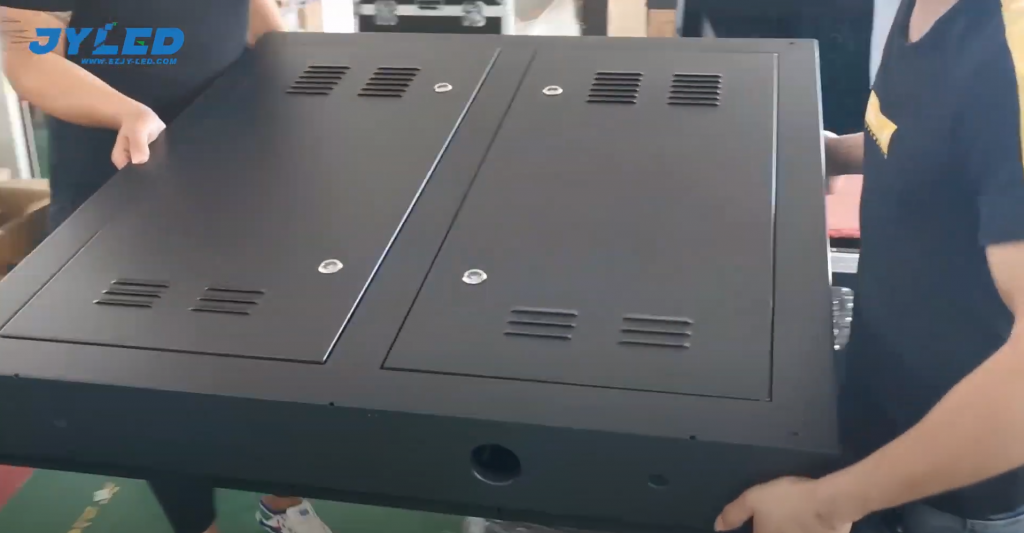
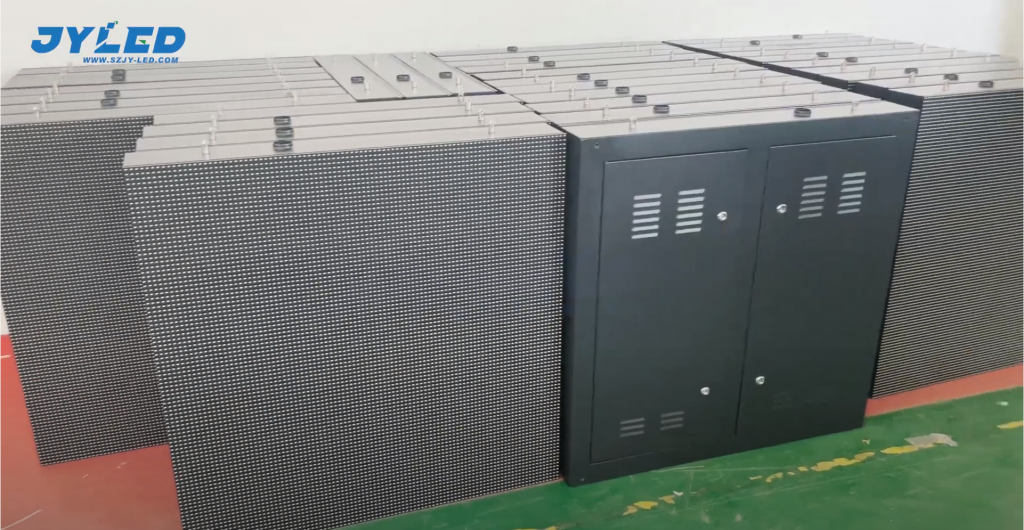
Clik on the video to view the full installation process
Media Contact
Company Name: SHENZHEN JYLED Technology CO.,Ltd.
Email: Send Email
Phone: +86-13553831871
Address:No.2505, Songbai Road, Shiyan, Baoan District
City: Shenzhen
State: Guangdong
Country: China
Website: https://www.szjy-led.com/
